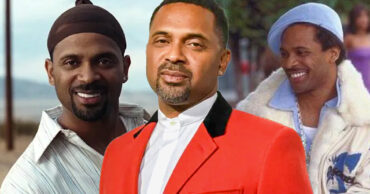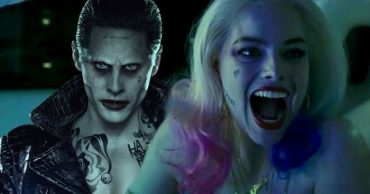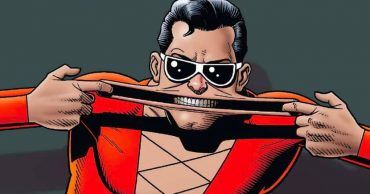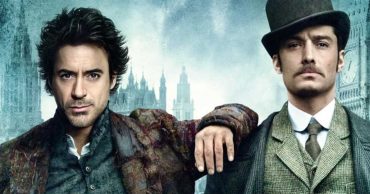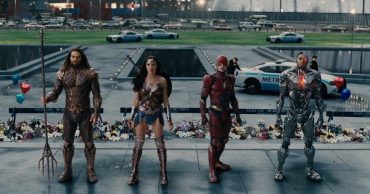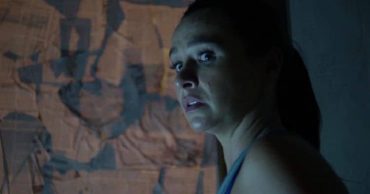Critically-adored gothic horror movies are rare to come across. However, Robert Eggers‘ Nosferatu remake is the latest film in the genre to emerge and captivate audiences and critics alike. Eggers has successfully breathed new life into a genre that, while not always in the mainstream spotlight, boasts a handful of standout entries.
Eggers’ visually stunning reimagining of the classic tale masterfully intertwines atmospheric cinematography with haunting performances, evoking the eerie essence of traditional gothic horror while appealing to modern sensibilities. It has been nominated for 4 Academy Awards and has so far grossed over $167 million worldwide against a budget of $50 million. So, as the genre gets fresh attention, here’s our pick of the 5 best gothic horror movies.
5. Angel Heart (1987)
Angel Heart, released in 1987, is a haunting gothic horror film that has slowly but surely ascended to cult status over the years, enthralling audiences with its intricate blend of noir, horror, and supernatural elements. Directed by Alan Parker, the film follows the journey of private investigator Harry Angel (Mickey Rourke), who is hired to track down a missing crooner named Johnny Favorite. As Angel traverses a murky underworld while trying to find the truth, he comes up against a series of eerie and perplexing events that lead him down a dark, cult-like, labyrinthine path riddled with betrayal and mayhem.
Despite its stellar cast, which includes Robert De Niro in a chilling rendition as the enigmatic Louis cypher, and Lisa Bonet as the mysterious Epiphany Proudfoot, Angel Heart slipped under the radar upon its initial release, overshadowed by more mainstream offerings. However, as years passed, a plethora of cinephiles and horror enthusiasts began to recognize the film’s atmospheric storytelling and rich visual style, cementing its place as a beloved classic in the gothic horror genre. All these years later, many fans of the movie have hoped for a sequel. However, this is unlikely to ever happen as reports suggest that Robert De Niro and Mickey Rourke did not get along while filming. Their feud has now lasted more than 30 years with Rourke claiming that De Niro thwarted his plans to star in Martin Scorsese‘s The Irishman. However, this does not dampen the might of Angel Heart – if anything, it adds to it.
4. Interview with the Vampire (1994)
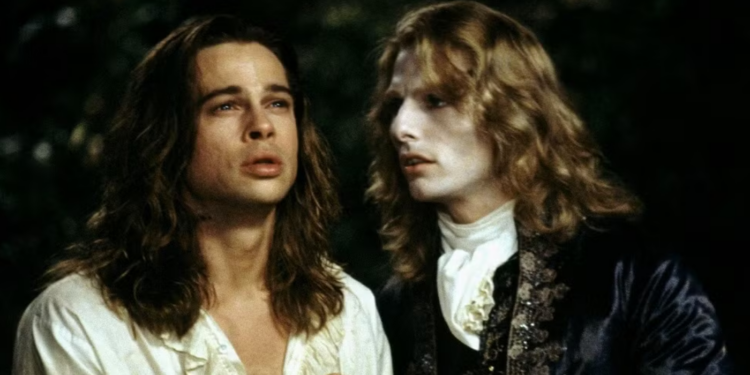
Interview with a Vampire is perhaps as mainstream as gothic horror movies get. Neil Jordan‘s Oscar-nominated picture is packed full of actors who were either on the rise or already well and truly there. The ensemble cast includes Brad Pitt, Christian Slater, Tom Cruise, Antonio Banderas, Kirsten Dunst, and Thandiwe Newton.
Hitting movie theaters in 1994, Interview with a Vampire grossed $224 million worldwide against an estimated budget of $60 million. Since then, it has continued to grow in appeal and has become a cult classic. This visually stunning and emotionally charged take on the timeless tale of vampirism, masterfully adapted from Anne Rice‘s 1976 novel of the same name, follows Louis de Pointe du Lac (Brad Pitt), a charismatic and introspective vampire, who sits for an interview with a young reporter, Daniel Malloy, portrayed by Christian Slater. As the narrative unfolds, Louis recounts his life story, from his mortal days in 18th-century New Orleans to his tragic transformation into an immortal creature of the night, sharing the tale of his relationship with his maker, the brooding and enigmatic Lestat, skillfully brought to life by Tom Cruise. What sets Interview with the Vampire apart from other vampire films is its innovative narrative structure, which transforms the horror genre into a sweeping drama epic, filled with poignant moments of loss, despair, and longing.
3. Sleepy Hollow (1999)
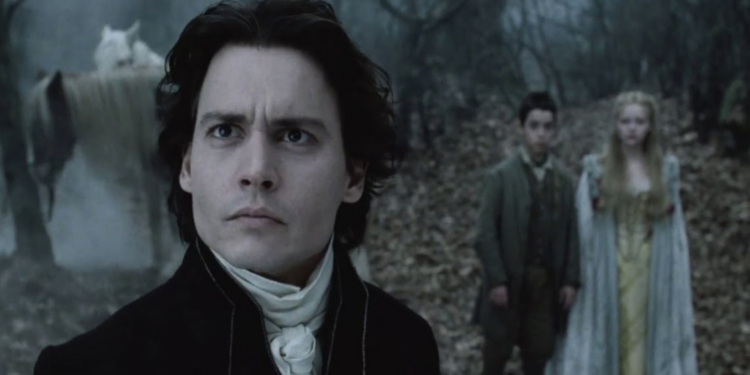
By the time Sleepy Hollow landed in movie theaters in 1999, audiences had came to know and love the dynamic duo of actor Johnny Depp and visionary filmmaker Tim Burton. The two Oscar-nominees previously worked together on the dark take on Ed Wood‘s life, simply titled Ed Wood, and the classic gothic but family-friendly drama Edward Scissorhands. Sleepy Hollow took these two movie’s styles and ramped them up, keeping the bleak feel alive while incorporating sheer horror.
Set in 1799 in the quaint but troubled town of Sleepy Hollow, New York, the film tells the tale of Ichabod Crane, a clever and skeptical detective from New York City, tasked with solving a series of gruesome and supernatural murders attributed to the legendary Headless Horseman. As Ichabod delves deeper into the mystery, he finds himself entangled in a dark and dangerous world of witchcraft, ancient curses, and forbidden love, with the mystifying Katrina Van Tassel, played by Christina Ricci, at the center of the intrigue. The film was a box office triumph, grossing approximately $207 million worldwide, solidifying the unstoppable partnership between Johnny Depp and Tim Burton, who would go on to collaborate on a string of successful films, including Charlie and the Chocolate Factory and Sweeney Todd: The Demon Barber of Fleet Street.
2. Nosferatu the Vampyre (1979)
Robert Eggers’ Nosferatu is a remake of the 1922 silent film, Nosferatu: A Symphony of Horror, a trailblazing horror movie of its time that has endured a lasting legacy. However, there is another re-telling of the tale of Nosferatu that was released in 1979, which Eggers has also drawn inspiration from. In Werner Herzog‘s 1979 take, the story remains centered around Count Dracula, who travels from his eerie castle in Transylvania to the unsuspecting town of Wismar, bringing with him the sinister shadow of the Black Plague that decimates the population. The plot follows Jonathan Harker, a young estate agent, as he unwittingly becomes entwined in the vampire’s dark seduction, ultimately thrust into a battle against the terror unleashed upon his loved ones.
At the heart of the narrative is the idea that only a woman pure of heart, represented by Lucy Harker, can confront and end Dracula’s reign of horror. Herzog’s masterful direction and use of surreal visuals breathe new life into the vampire mythos, successfully thrusting the story into the mainstream while paying homage to its roots. His philosophical exploration of existence and mortality, combined with Klaus Kinski’s haunting portrayal of Dracula, elevates the film into a profound meditation on evil and longing, ensuring its place as a classic in both horror and art cinema.
1. Bram Stoker’s Dracula (1992)
To many, 1992’s Bram Stoker’s Dracula is the ultimate gothic horror movie. Not only was it stacked full of A-List talent, it was helmed by Francis Ford Coppola, a true legend of cinema. This visually striking adaptation of the classic gothic novel deftly weaves together elements of horror, drama, romance, and suspense into a rich tapestry of storytelling. The film follows the tragic tale of Count Dracula, portrayed by Gary Oldman, who, driven by a deep longing for his lost love, Mina Murray (Winona Ryder), embarks on a dark journey from Transylvania to Victorian England, spreading terror while pursuing her.
Coppola’s classic film garnered massive amounts of critical acclaim, winning three Academy Awards and solidifying its status as a landmark in horror cinema. With a remarkable box office haul of over $215 million, Bram Stoker’s Dracula not only showcased Coppola’s directorial prowess but also reinvigorated the Dracula legend for a new generation, proving the story’s enduring power to enthral and terrify. Alongside Oldman and Ryder, Bram Stoker’s Dracula boasted a stellar supporting cast, including Keanu Reeves, Anthony Hopkins, Cary Elwes, and Richard E. Grant.
 Follow Us
Follow Us
